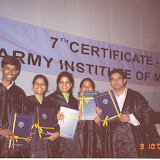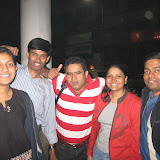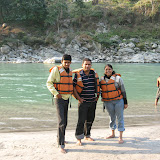Evolution Of Indian IT Giants ( Wipro & Infosys )
It’s after a pretty long time, I could manage to throw some text on to my blog. This time with a story of evolution of the revolution in Indian IT, with the two biggies Wipro & Infosys. The Economic Times, managed bringing the master minds behind these two brands under one roof for thought sharing. The following is a small excerpt from the very long conversation that took place among ET Editor, Azim Premji & Narayan Murthy.
The Economic Times : Could you briefly trace for us the evolution of your companies into global players? The story has been said several times, but not by both of you together. Also, where do you see your companies placed in the growth trajectory ?

Azim Premji : Our origins are in a completely different business, but I will restrict the discussion to IT because that seems to get the maximum visibility now, certainly vis-à-vis the media and certainly vis-à-vis The Economic Times. Our origins started in 1980 in the domestic hardware industry.
As a matter of strategy, we built around it a very strong services and solutions business. We used that as a major differentiator apart from having leading-edge hardware because we had no legacy of an installed base. We entered the global market only in the end 80s and that was because imports became more liberal.
With that, the 600 people we had in R&D became redundant as we didn't require such a large team trying to reinvent the wheel. So we positioned them as R&D service engineers on a contract basis to global companies. We have grown since then in terms of diversifying from R&D to enterprise services and broadening our address from beyond America to Europe, Japan and some other countries.
The pioneering work, which the software industry has done-whether it be led by TCS, Infosys or Wipro-is to establish a very sound globalisation of services. The fact that all the multinationals today are trying to copycat it means that they see the endorsement of that model as being fundamental to the way a customer wants services to be delivered.
There is the requirement of cycle-time, of cost economy, of higher levels of service, of doing whatever you need to get done at the best possible value. I can see at least two to three Indian companies being in the top ten in the next three to five years globally in terms of physical revenue size. Three companies are already in the top 10 in terms of market cap and profits. That's exceptional, because that's eventually your engine of growth.
If we do not achieve that, we just have ourselves to blame. We have the momentum, we are gaining more credibility with customers, we are getting into much larger contract sizes, we are in the play now for billion-dollar contracts. And I think our competitors appreciate that and have really woken up to that.

Narayan Murthy : I started a company called Softronics in Pune in 1977. I quickly realised that focus on domestic market was not going to take me too far. So I gave it up and joined Patnis because I wanted to get some corporate experience. In 1981, when we founded Infosys, we were very clear from day one that we had to be focused on global markets. That was a tough exercise because the friction to business was extremely high.
It would take two to three years and 50 visits to Delhi to get a license to import a computer. We had to wait in front of the Reserve Bank of India for 10 days to travel abroad once. It was almost impossible to open offices abroad or get a consultant in marketing or in quality because there were severe restrictions on what you could pay them.
Employing non-Indians was out of question. So we were a fledgling company between '81 and '91. Our revenues grew from $130,000 to something like $1.3-1.4 million by 1992. But all of that changed with Dr Manmohan Singh's economic reforms under the guidance of Mr Narasimha Rao, who was then the prime minister.
Then several things happened. First, there was lessening of friction to business, we had current account convertibility, the office of controller of capital issues was abolished with the result IPO became a decent opportunity for entrepreneurs and 100% equity was allowed for multinationals in high-tech area. That's when the IBMs and Microsofts of the world came to Bangalore. Many of my friends then told us, look your story is over now. The employees will all leave and go.
For us the question was, how do we make sure that we become a company that is more attractive to employees than the IBMs. That's when we built India's first software campus and we created India's largest stock option plan. That is also when we started thinking in terms of globalisation and global mindset because the government was no longer a bottleneck.
We opened offices abroad. Then we realised that if we have to have the mindshare of the CEOs and CFOs abroad we have to be listed on a stock exchange there and that's how our listing on Nasdaq happened in 1999. Then came our representation of our balance sheet and income statement according to the generally accepted accounting principles of US (US GAAP).
As we moved forward, we felt a need to become an end-to-end business solution provider and that's how we started Infosys Consulting. We acquired a company in Australia and made it Infosys Australia, which is doing pretty well. We started our operations in China, we have created wonderful state-of-the-art offices in Canary Wharf, No 10 Bank Street in London, in Fifth Avenue in Manhattan, in Freemont.
In other words, our ambitions started increasing. We then said, now we have to be seen as a local company in some sense. We have to have good infrastructure, we have to invest heavily in technology, we have to enhance brand equity. That's how this Wharton-Infosys Global Transformation award started. So I think it has been a good continuum.

Managed To Get Some Food For Thought, Right !...
Smile Always,
Raja Gopal.



